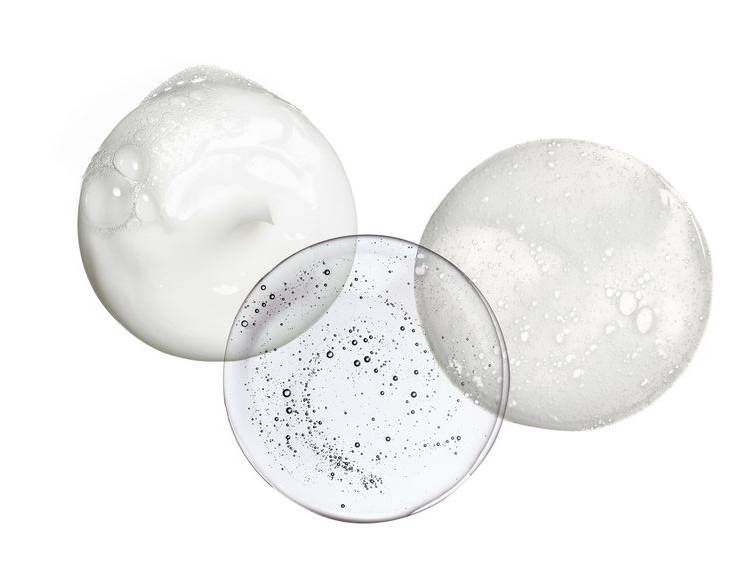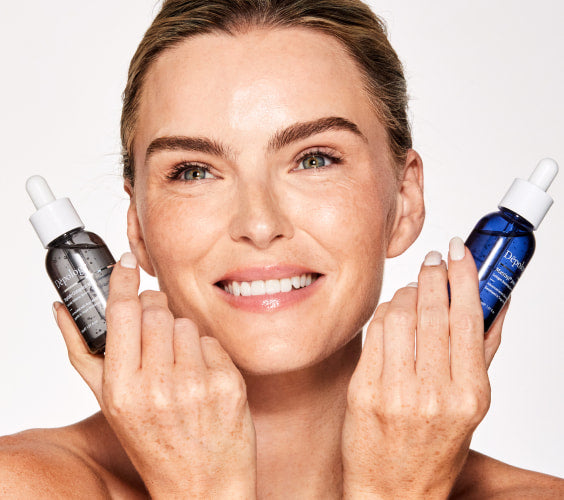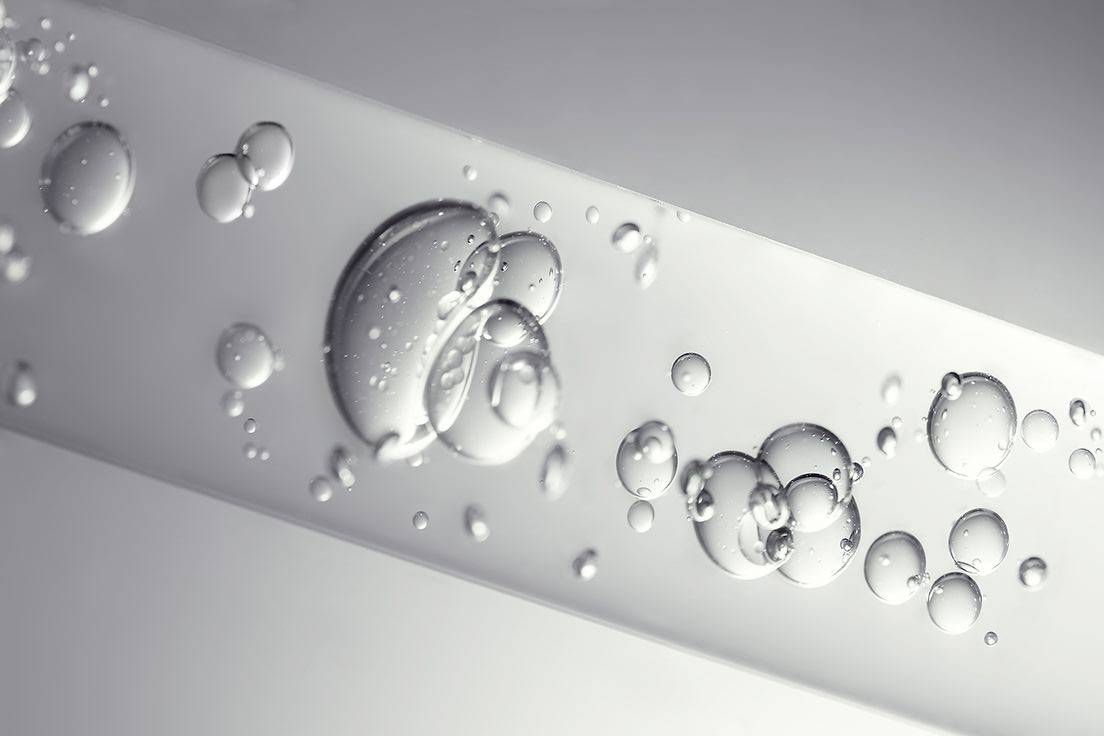
Mandelic Acid Vs Retinol
Certain substances stand out in the vast skincare world, not merely for their hype but also for their proven efficacies. Retinol and mandelic acid are two such shining examples, each securing a place in dermatological mixtures. Although both are praised for their remarkable skin-changing abilities, it is challenging and interesting to understand how they both work and what advantages they have.
By exploring the differences in greater detail, we hope to clarify the science underlying these powerful active ingredients and shed light on their distinct functions in the field of skin rejuvenation. Before we get started, let's learn more about the use of mandelic acid in skincare.
What is mandelic acid?
"Where mandelic acid does it come from?" Mandelic acid is derived from bitter almonds. The name "mandelic" is, in fact, derived from the German word for almond, "Mandel."
Mandelic acid is an alpha hydroxy acid (AHA) that has carved its niche in the world of skincare due to its unique properties and versatile benefits and in the category of naturally-occurring acids renowned for their exfoliating properties in skincare. As an AHA, it aids in the exfoliation of the skin, but its larger molecular size gives it a distinct edge over its counterparts.
benefits of mandelic acid for your skin?
Key properties and benefits in skincare:
- Gentle exfoliation: Mandelic acid promotes the shedding of dead skin cells, revealing a brighter and smoother complexion beneath.
- Suitable for sensitive skin: Because of its larger molecular structure, mandelic acid is absorbed more slowly by the skin, which tends to make it less irritating than other AHAs. This makes it a preferable choice for sensitive skin types.
- Acne reduction: Mandelic acid possesses antimicrobial properties, which makes it effective against acne-causing bacteria. This can help in reducing and preventing acne breakouts.
- Anti-aging benefits: Regular use of mandelic acid can help aid collagen within, reducing the appearance of fine lines and wrinkles, and giving the skin a more youthful appearance.
- Addresses hyperpigmentation: Mandelic acid can help fade dark spots, age spots, and melasma, resulting in a more even skin tone. Its ability to accelerate cell turnover can diminish signs of photoaging and discoloration.
- Minimizes pores: By exfoliating the skin and removing debris and excess sebum from pores, mandelic acid can help reduce the appearance of enlarged pores.
- Improved skin texture: By promoting cell turnover, mandelic acid can smooth out rough skin textures, resulting in softer, more refined skin.
- Enhanced moisture retention: While primarily known for its exfoliating properties, mandelic acid can also enhance the skin's moisture retention capability, aiding in hydration.
- Antioxidant properties: Mandelic acid exhibits antioxidant properties, which means it can help protect the skin from harmful free radicals and oxidative stress, factors that contribute to premature aging.
what are the side effects of mandelic acid
Mandelic acid is a gentle alpha hydroxy acid (AHA) that is well-tolerated by most skin types, including sensitive skin. However, it is still important to be aware of the potential side effects of using mandelic acid, which can include:
- Dryness: Mandelic acid can exfoliate the skin by removing dead skin cells, which can lead to dryness. It is important to use a moisturizer after using mandelic acid to help keep the skin hydrated.
- Redness: Mandelic acid can also cause redness and irritation, especially in people with sensitive skin. It is important to start with a low concentration of mandelic acid and gradually increase the concentration as your skin tolerates it.
- Stinging: Mandelic acid can also cause a stinging sensation when applied to the skin. This is usually temporary and goes away after a few minutes.
- Increased sensitivity to the sun: Mandelic acid can make the skin more sensitive to the sun. It is important to use sunscreen with an SPF of 30 or higher every day, especially when using mandelic acid.
If you experience any of these side effects, stop using mandelic acid and consult with a dermatologist.
Here are some tips for minimizing the risk of side effects from using mandelic acid:
- Start with a low concentration of mandelic acid and gradually increase the concentration as your skin tolerates it.
- Apply mandelic acid to clean, dry skin.
- Leave the mandelic acid on your skin for 5–10 minutes, then rinse it off with lukewarm water.
- Follow with a moisturizer.
- Use sunscreen every day, especially when using mandelic acid, as it can make your skin more sensitive to the sun.
If you have any concerns about using mandelic acid, be sure to talk to your dermatologist.
How often should you use mandelic acid?
For beginners, starting with 2–3 times a week is recommended to gauge skin tolerance. Over time, and based on skin's adaptability, frequency can be increased.
Can I use mandelic acid every day?
Daily use is possible for those with resilient skin types. However, always monitor for signs of over-exfoliation such as redness, sensitivity, or peeling.
Mandelic Acid vs. Retinol
Both mandelic acid and retinol are revered ingredients in the realm of skincare, each boasting its own set of benefits. While they have distinct mechanisms of action, they can play complementary roles in a well-thought-out skincare regimen. Here's a deep dive into their differences and how they can be optimally used together.
Mandelic Acid:
- Nature: An alpha hydroxy acid (AHA)
-
Primary Benefits:
- Gentle exfoliation, promoting skin cell turnover.
- Suitable for sensitive skin due to its larger molecular size.
- Antimicrobial properties beneficial for acne-prone skin.
- Aids in fading hyperpigmentation and evening skin tone.
Retinol:
- Nature: A vitamin A derivative
-
Primary Benefits:
- Speeds up skin cell renewal, minimizing fine lines and wrinkles.
- Helps unclog pores and supports clearer skin.
- Rejuvenates the skin and improves overall texture.
- Can fade dark spots with consistent use.
Can You Use Both in the Same Skincare Routine?
Yes, mandelic acid and retinol can be used together — but with caution. Both promote cell turnover, so overuse can increase irritation or sensitivity.
How to use mandelic acid with retinol
Layering these two can be effective if done correctly:
- Start by cleansing the face.
- Apply mandelic acid and allow it to absorb fully.
- Follow with hydrating serums.
- Finish with your retinol moisturizer .
For sensitive skin, spacing them out is better — mandelic acid in the morning and retinol at night.
When Is It Best to Use: Morning or Night?
-
Mandelic Acid: Can be used morning or night. If used in the morning, apply SPF because AHAs increase photosensitivity.
-
Retinol: Best used at night because sunlight can degrade the ingredient and increase sensitivity.
Our pick: Anti-Aging Retinol Night Cream
Glycolic acid or mandelic acid? Which is "better"?
Mandelic acid and glycolic acid are both alpha hydroxy acids (AHAs), potent exfoliants celebrated for their ability to renew the skin's surface.
In essence, neither acid is universally “better.” Their suitability depends on your skin’s needs and tolerance. As with all active ingredients, patch testing is recommended; consulting a dermatologist is ideal for personalized advice.
Mandelic Acid:
- Source: Derived from bitter almonds
- Molecular Size: Larger molecular structure.
- Skin Penetration: Penetrates more slowly → less irritating → great for sensitive skin.
Key Benefits:
- Reduces signs of aging like fine lines.
- Helps treat acne due to antimicrobial properties.
- Targets hyperpigmentation and uneven tone.
- Generally gentler on reactive or sensitive skin.
Glycolic Acid:
- Source: Derived from sugar cane
- Molecular Size: Smallest AHA molecule.
- Skin Penetration: Penetrates quickly and deeply → strong exfoliation but may irritate some skin types.
Key Benefits:
- Highly effective for visible signs of aging.
- Brightens complexion and smooths texture rapidly.
- Helps treat surface-level scars and discoloration.
- Preferred for sun-damaged or mature skin.
Summary: Can I use mandelic acid with retinol?
Mandelic acid and retinol, two cornerstones of modern skincare, each bring powerful but different benefits. Mandelic acid offers gentle exfoliation suitable even for sensitive skin, while retinol supports deep rejuvenation, collagen stimulation, and reduction of fine lines.
Can they be used together? Absolutely. They can work synergistically when layered properly or used alternately. However, because both increase cell turnover, they may increase sensitivity for some skin types.
If you choose to use both:
- Consider alternating nights.
- Or use mandelic acid in the AM & retinol in the PM.
- Always monitor your skin’s reaction.
- Introduce slowly, especially if you have sensitive skin.
With mindful use and a structured routine, these two ingredients can significantly enhance skin clarity, texture, and radiance.













